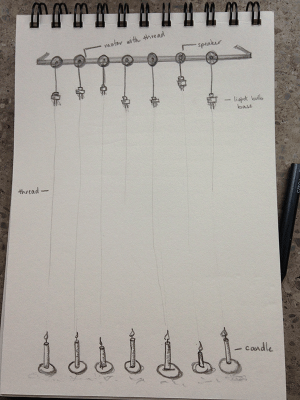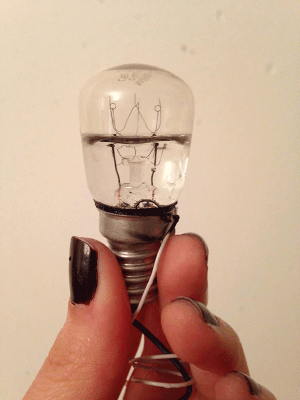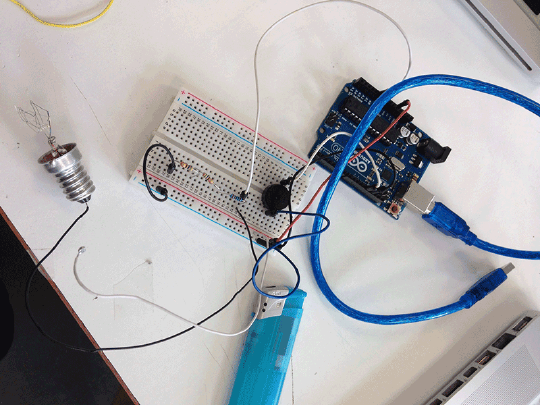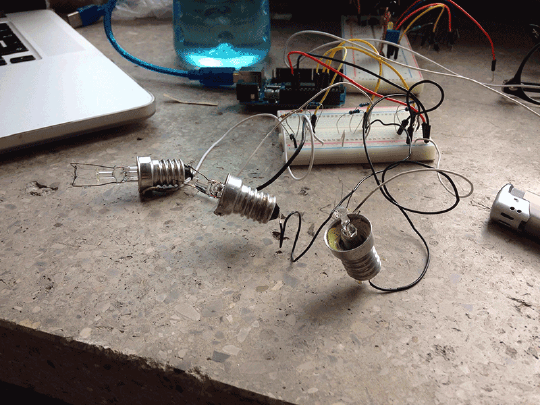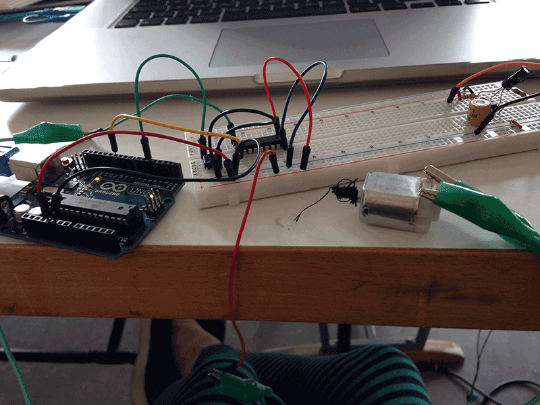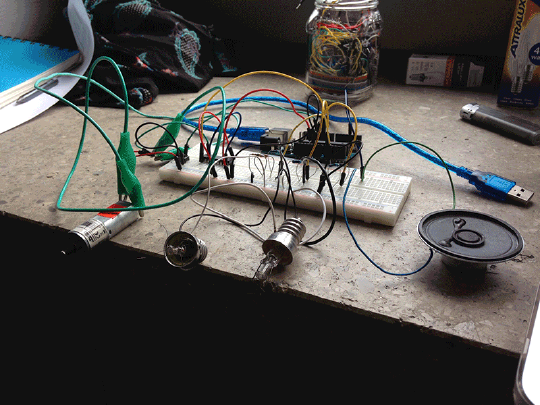| Line 51: | Line 51: | ||
[[File:Final_circuit.png | 540px]] | [[File:Final_circuit.png | 540px]] | ||
===OTHER EXPERIMENTS AND | ===OTHER EXPERIMENTS, APPROACHES AND INSPIRATION=== | ||
'''FLAME SPEAKER''' | |||
Experiment in 1950's, some people have recreated this experiment but the hazards of building them are great. Some others | |||
More information [http://www.swtpc.com/mholley/PopularElectronics/May1968/Flame_Amplification.htm here] | |||
'''PLASMA SPEAKER''' | |||
'''IONIZED FLAME''' | |||
Revision as of 16:53, 4 June 2016
THREADS OF LIGHT (¿?)
MATERIALS
- Fire (candle)
- Motors
- Speaker
- Resistors
- Light Bulb with no glass
SCHEMA
Six motors with yarn in the shaft will be on top of the installation hidden behind speakers that will be making sound according to the temperature sensors or bulb base with tungsten cables. On the lower part of the installation burning candles will lay on the floor. The thread will be hanging and when it reaches the candle it will start burning. The fire will then go all the way up until it reaches the light base sensor. When its temperature changes, the sound will also change and the motor will release more yarn so the process be repeated again.
PROCESS
BULB SENSOR
Finding the right bulb sensor.
The tungsten cables that are used to light up a bulb are good sensors for temperature. With the right debugged arduino code they can become in very sensitive heat sensors, they work amazing with fire.
A research was made to find out how the light bulbs work and how to break glass.
Light bulbs are very aesthetic materials to work on. They do not need to be all the time giving light but many of their parts can be used. Most light bulbs nowadays are made with LED lights or halogen gases, to make them last longer.
Three bulbs base were connected to arduino to test different temperatures given by different types of tungsten assembled cables, some were giving numbers from 200 to 400 and others from 500 to 800. This was displayed in the code as the frequency of sound within the speakers.
The code was giving some troubles because each one of the speakers connected to the sensor had to have a "tone();" and "noTone();" so each sound would respect the other. Multiple speakers were then connected and working, each one of them reacting to their own sensor.
MOTOR
For the yarn to be going down a motor was the best option. A slower DC motor with a switch was developed to get to know how it works.
It works fine right now but it needs extra elements or a different type of yarn so it goes down by itself. Some hacks need to be done. But some burning tests on the yarn need to be also done to get the fire controlled.
Another code was develop, one that included the reaction of the motor once the sensor changes its temperature. Some debugging needs to be still done.
This is how the final setup with no fire is looking right now.
OTHER EXPERIMENTS, APPROACHES AND INSPIRATION
FLAME SPEAKER
Experiment in 1950's, some people have recreated this experiment but the hazards of building them are great. Some others
More information here
PLASMA SPEAKER
IONIZED FLAME
